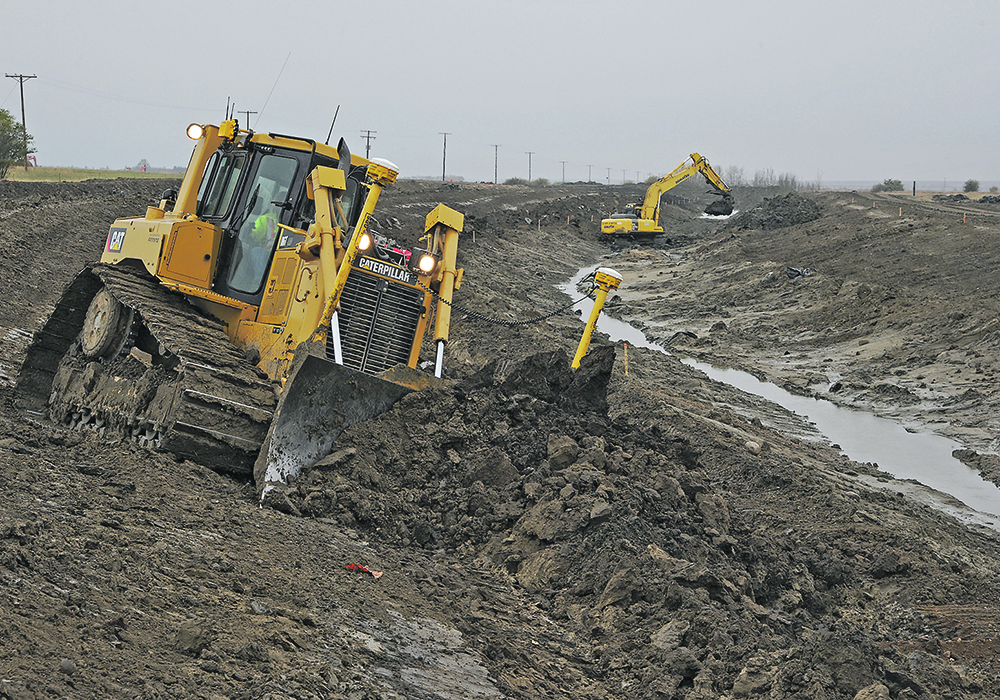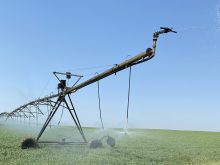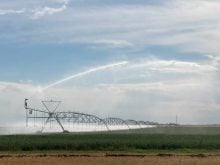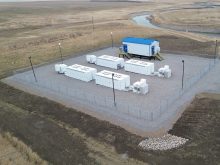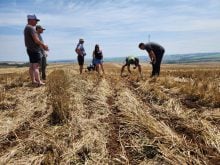The large-scale irrigation expansion plan for Lake Diefenbaker is still in the works, even if there isn’t much to see on the ground.
The plan includes the rehabilitation and expansion of the Westside Irrigation Project and construction of the Qu’Appelle South water conveyance project, which would deliver water to the Regina and Moose Jaw area.
An estimated 500,000 acres could be irrigated after all three phases are complete.
Clinton Molde, executive director of irrigation development for the Water Security Agency, said Westside is the priority.
Read Also

Agri-business and farms front and centre for Alberta’s Open Farm Days
Open Farm Days continues to enjoy success in its 14th year running, as Alberta farms and agri-businesses were showcased to increase awareness on how food gets to the dinner plate.
“Right now, we’re not doing further work on the Qu’Appelle side,” he told the Saskatchewan Irrigation conference. “We’re strictly focusing our efforts on the Westside project.”
Another 80,000 acres could be irrigated after the rehabilitation is complete with 260,000 acres possible after the expansion.
Molde said the project could involve two main pump stations, nearly 400 kilometres of canals delivering water and another 1,400 km of pipe taking the water from the canals to farmers’ fields.
There are hundreds of structures involved and potentially more than 2,000 pivots.
GIS and LiDAR mapping has been done.
“We’ve evaluated 40,000 acres of land in the project area,” Molde said. “Two hundred sixty-five field reports were completed for producers.”
A water management model for the Saskatchewan River system is looking at how allocations would affect the reservoir and downstream water levels.
“We also completed some geotechnical, hydrogeological investigation, particularly along some of the existing infrastructure that’s in place today,” he said.
There are highways, utilities, railways and pipelines to consider.
The environmental permitting process is ongoing, and baseline assessments of plants, animals and water quality are being done. Initial heritage and cultural assessments are also complete.
KPMG is finalizing a financial analysis, he said.
When the project was announced in 2020, the timeline was 10 years. However, premier Scott Moe recently said during a speech it could take longer to construct.
In the meantime, WSA is working on several smaller projects, including the recently announced expansion along the Saskatoon South East Water Supply System, or SSEWSS, after a canal upgrade.
In the Loreburn-Elbow area, there is strong producer interest to develop irrigation.
“Some (studies) have indicated at least 19,000 acres of irrigated land could be there, and other studies have said more,” Molde said. “Right now, we have a consultant looking at conceptual work and some preliminary engineering work on identifying irrigable land, water source conveyance and distribution options, and recommendations to move this project forward.”
That work should be done this spring.
That’s the same timeline for a conceptual study to be complete on irrigating 18,000 acres from the North Saskatchewan River, based on previous studies.
The Quill Lakes basin, which has been an area of concern due to rising water levels and flooding, is the subject of a study looking at potentially capturing water before it enters the lakes and using it to irrigate.
Conceptual design looked at water storage options including creeks, off-stream storage and current rural municipal reservoirs.
“Two hundred five thousand acres could be irrigated in that basin but oddly there’s only enough water for 24,000 acres,” said Molde. “The real benefit is not only irrigating with that water but getting a drainage approval so you can gather that water to irrigate with.”
Next steps include gauging producer interest since this involves a number of small individual projects.
To the southeast, the decommissioning of three reservoirs SaskPower currently uses to cool water for its coal-fired generating stations could result in available water. Previous studies have suggested 10,000 acres could be irrigated and a consultant is looking at which lands are suitable.
The WSA and Saskatchewan Irrigation Projects Association are both working with five producers at Thunder Creek who currently irrigate about 635 acres. There is potential for 1,400 acres.
In the Old Wives Lakes basin, the WSA has six reservoirs acquired from the former Prairie Farm Rehabilitation Administration, and two others. Molde said they are looking at how all the reservoirs could work together along the Wood River system. This project is in the initial phases of examining water availability and how reservoir operation would occur.
Finally, the Swift Current Creek basin has been closed to allocation since the 1980s. The WSA is reviewing that system through this winter.


